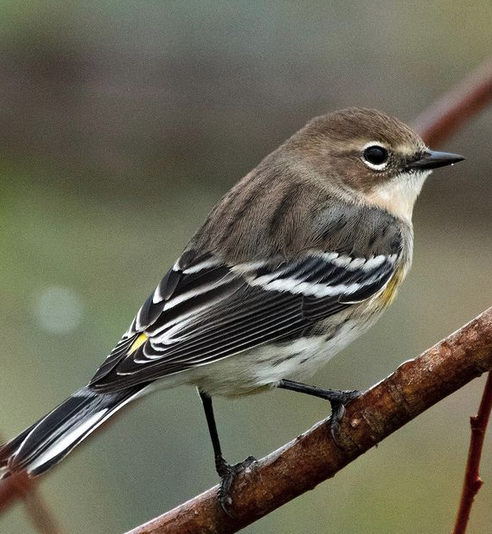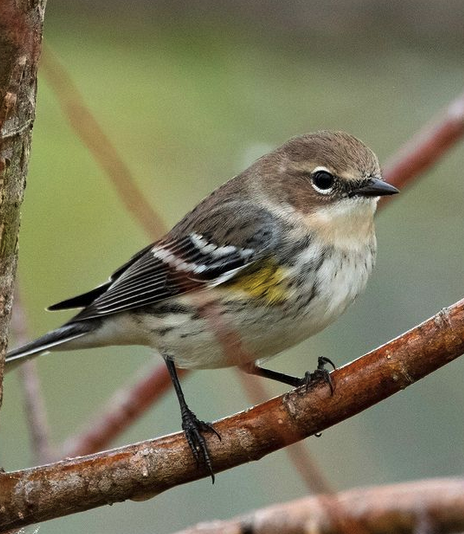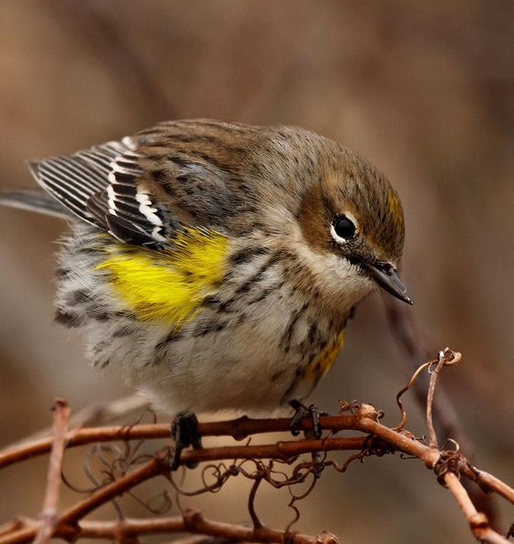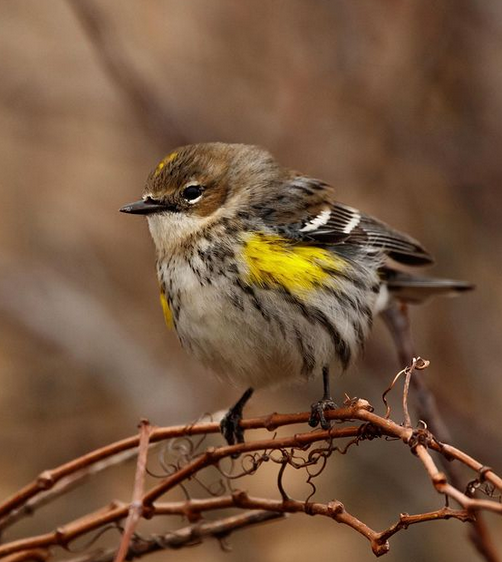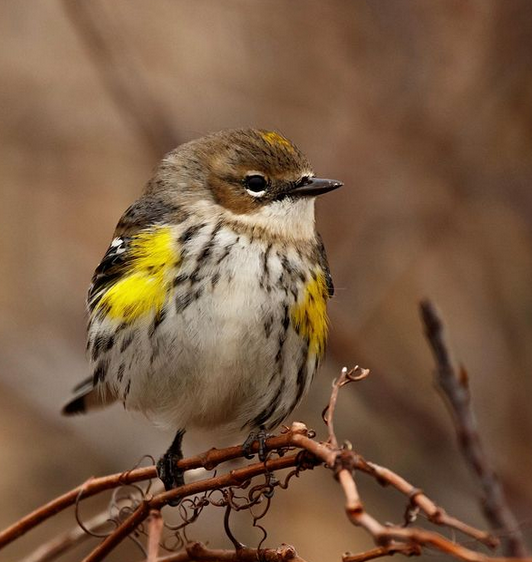By Sally Siko
A sign that winter is here the Yellow-rumped Warblers have returned to North Carolina.
I spotted this beauty last week while birding in the OBX.
While most of our warblers are leaving to spend the winter in warmer locals, Yellow-rumps are here to stay to brighten our days in the season to come.

Known affectionately as “Butter butts” they are dressed in their winter drab plumage of grey with points of yellow on their sides and rump.
Their main diet consists of insects and spiders but when winter arrives (making 6 or 8 legged meals scarce) they have the ability to change their diet to eating berries.
In fact, they are the only type of warbler that can digest the waxes found in bayberries and wax myrtles.
This dietary adaptation allows them to survive in locations further north than most other warbler species during the winter which may give them an advantage of a head start when migrating to their breeding grounds in the spring.

Yellow-rumped Warblers are particularly common in our coastal counties as well as in the central part of NC. They are also found in the foothills of the Appalachians in smaller numbers as well.
They usually stick around the Tarheel state until around mid May so you’ve got plenty of time to enjoy these beauties in the months ahead.
Photos & video by @sally_siko of @bestlife_birding captured on my mighty mirrorless monster, the @canonusa #R5


